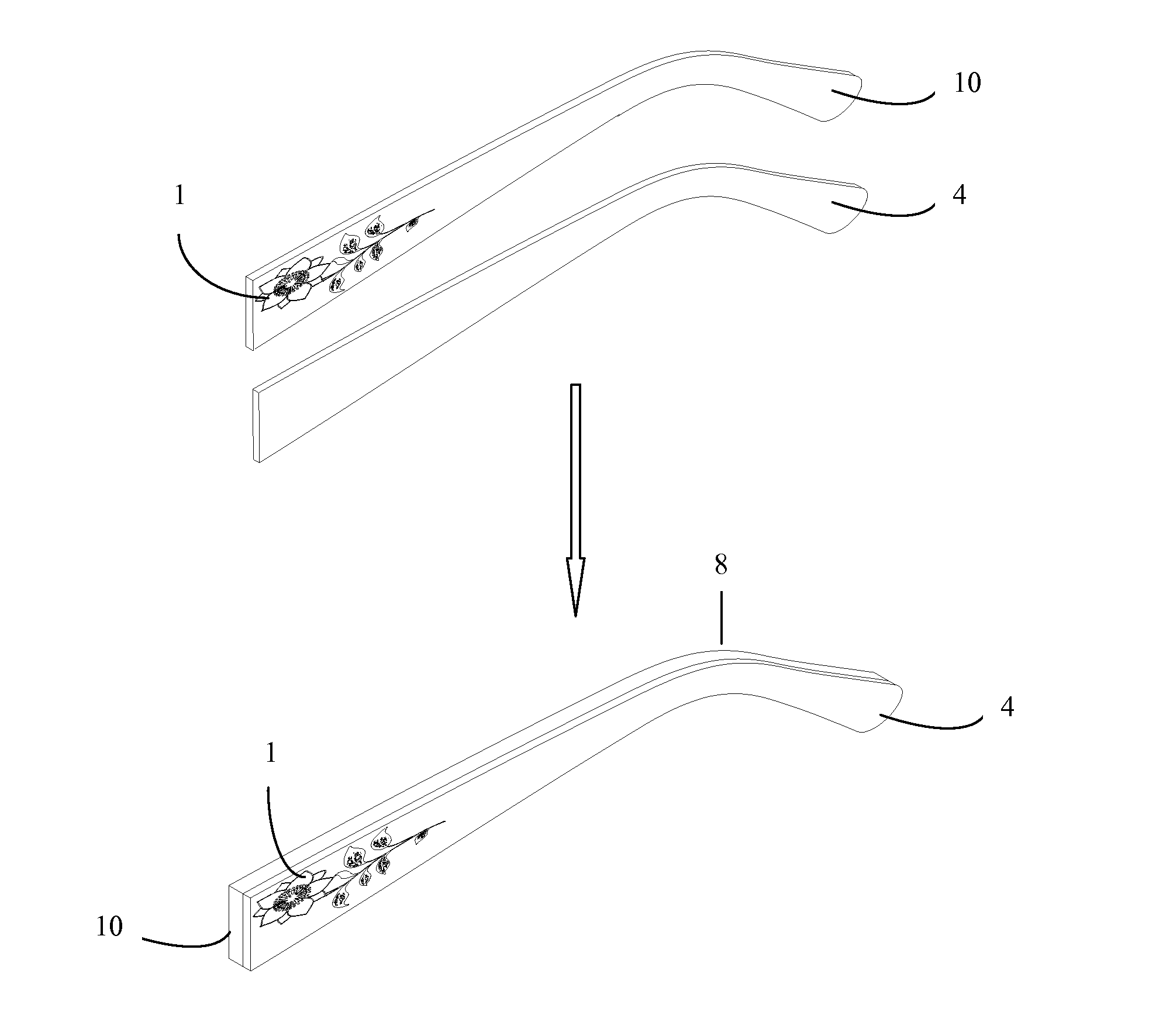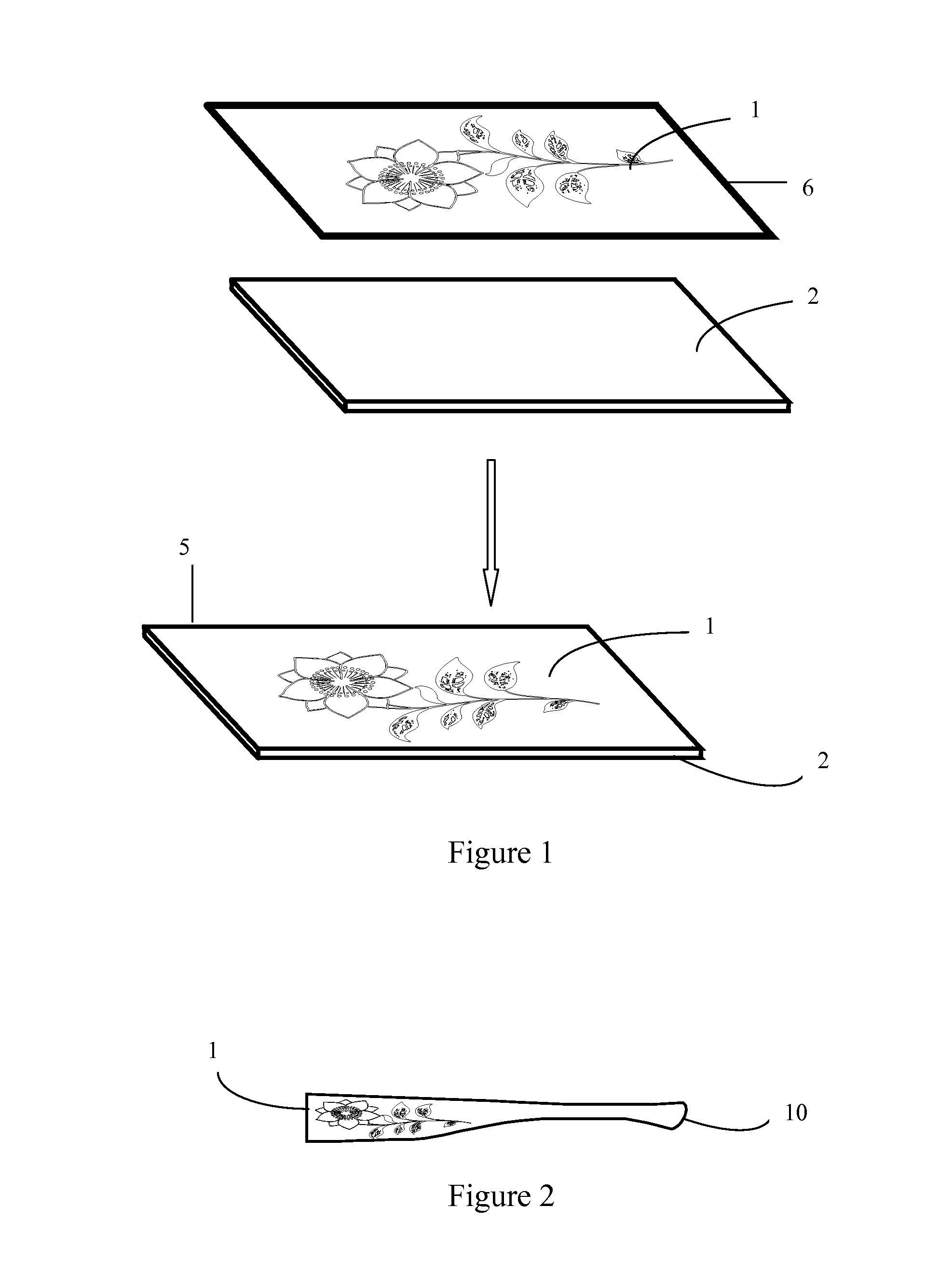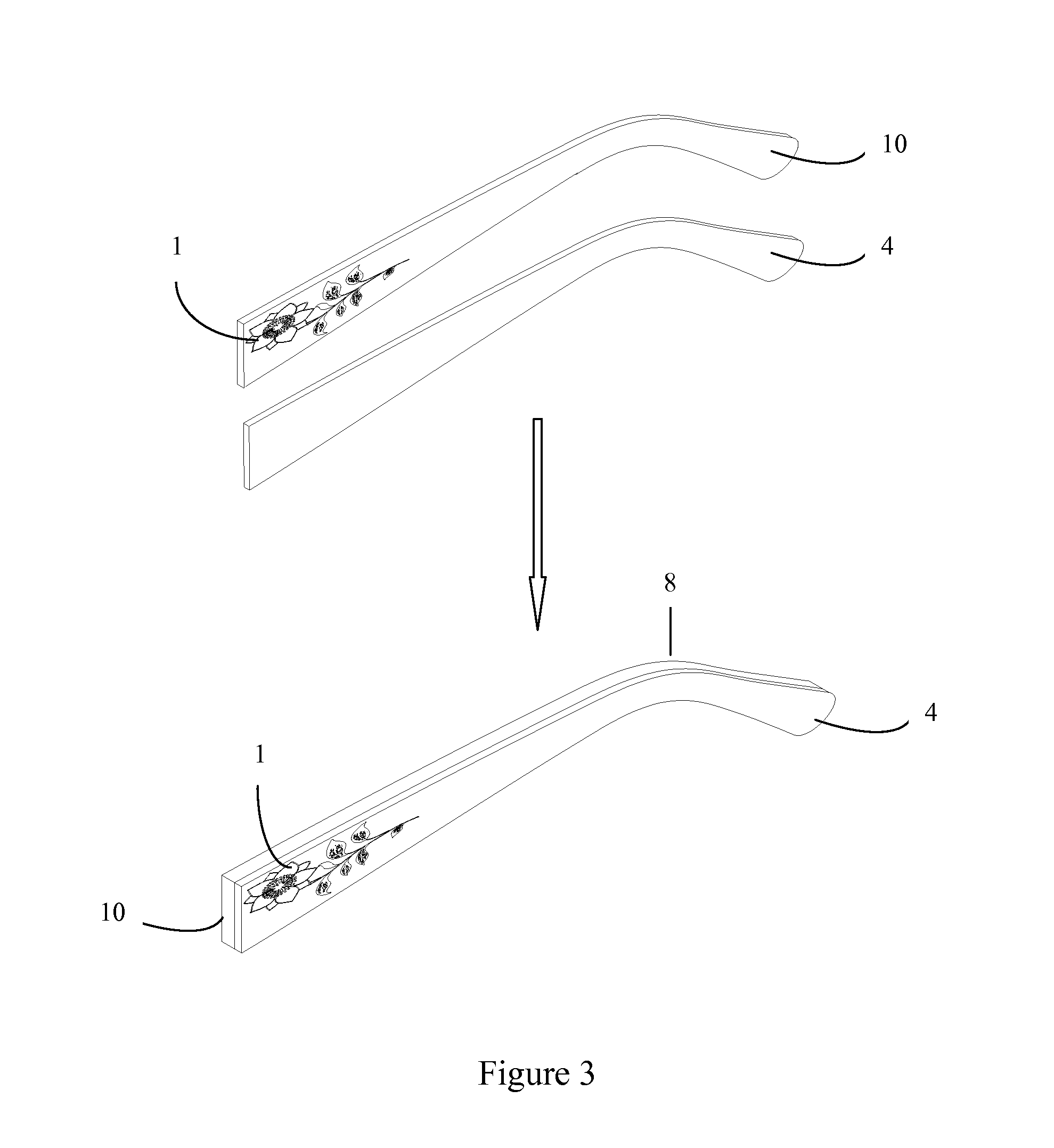Method of making eyeglass frame by injection molding
a technology of injection molding and eyeglass frames, which is applied in the direction of instruments, coatings, non-optical parts, etc., can solve the problems of large amount of plastic waste, low resolution, and design patterns produced by current technologies, and achieves the effects of reducing plastic waste and thus costs, simple and simpl
- Summary
- Abstract
- Description
- Claims
- Application Information
AI Technical Summary
Benefits of technology
Problems solved by technology
Method used
Image
Examples
example 1
Making an Eyeglass Temple Having a Two-Layer Structure with a Design Pattern
[0139]A design pattern (1) was first designed with a computer. The design pattern (1) was printed on a transfer sheet (6) by using a printer with sublimation inks wherein the humidity during the printing process was from about 45% to about 80%. The design pattern (1) was then printed from the transfer sheet (6) to a surface of a laminate (2) by heat press transfer printing to form a patterned laminate (5) as shown in FIG. 1 (the heat press was not shown). The transfer temperature was from about 150° C. to about 200° C. and the transfer time was from about 30 seconds to about 200 seconds. The laminate (2) with the design pattern (1) was converted into a patterned layer (10) having the shape of a temple as shown in FIG. 2. The patterned layer (10) was coated with JP-202, a lamination agent comprising triethyl citrate and cyclohexanone. Referring to FIG. 3, the patterned layer (10) was set in the cavity of a mo...
example 2
Making an Eyeglass Temple Having a Three-Layer Structure with a Design Pattern
[0140]A design pattern (1) was first designed with a computer. The design pattern (1) was printed on a transfer sheet (6) by using a printer with sublimation inks wherein the humidity during the printing process was from about 45% to about 80%. The design pattern (1) was then printed from the transfer sheet (6) to a surface of a laminate (2) by heat press transfer printing to form a patterned laminate (5) as shown in FIG. 1 (the heat press was not shown). The transfer temperature was from about 150° C. to about 200° C. and the transfer time was from about 30 seconds to about 200 seconds. The laminate (2) with the design pattern (1) was converted into a patterned layer (10) having the shape of a temple as shown in FIG. 2. The patterned layer (10) was coated with JP-202, a lamination agent. Referring to FIG. 4, the patterned layer (10) was set in the cavity of a mold of the injection molding machine (not sho...
example 3
Making an Eyeglass Temple Having a Two-Layer Structure with a Design Pattern and a Metal Logo
[0142]A design pattern (11) was first designed with a computer. The design pattern (11) was printed on a transfer sheet (16) by using a printer with sublimation inks wherein the humidity during the printing process was from about 45% to about 80%. The design pattern (11) was then printed from the transfer sheet (16) to a laminate (12) by heat press transfer printing to form a patterned laminate (13) as shown in FIG. 5 (the heat press was not shown). The transfer temperature was from about 150° C. to about 200° C. and the transfer time was from about 30 seconds to about 200 seconds. Referring to FIG. 6, a metal logo (15) was placed on top of the patterned laminate (13). The patterned laminate (13) with the design pattern (11) and metal logo (15) was converted into a patterned layer (20) having the shape of a temple as shown in FIG. 6. The patterned layer (20) was coated with JP-202, a laminat...
PUM
| Property | Measurement | Unit |
|---|---|---|
| transfer temperature | aaaaa | aaaaa |
| mold pressure | aaaaa | aaaaa |
| mold temperature | aaaaa | aaaaa |
Abstract
Description
Claims
Application Information
 Login to View More
Login to View More - R&D
- Intellectual Property
- Life Sciences
- Materials
- Tech Scout
- Unparalleled Data Quality
- Higher Quality Content
- 60% Fewer Hallucinations
Browse by: Latest US Patents, China's latest patents, Technical Efficacy Thesaurus, Application Domain, Technology Topic, Popular Technical Reports.
© 2025 PatSnap. All rights reserved.Legal|Privacy policy|Modern Slavery Act Transparency Statement|Sitemap|About US| Contact US: help@patsnap.com



